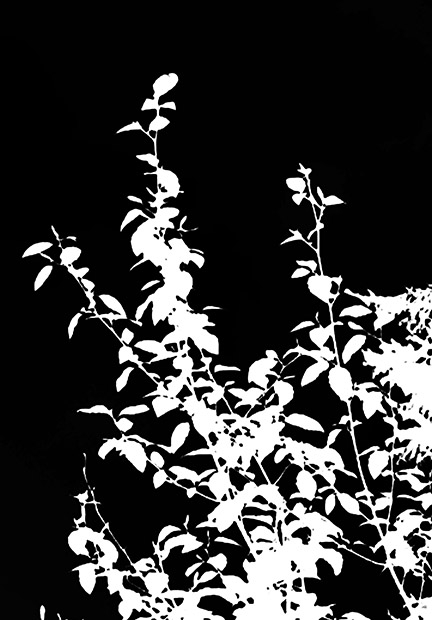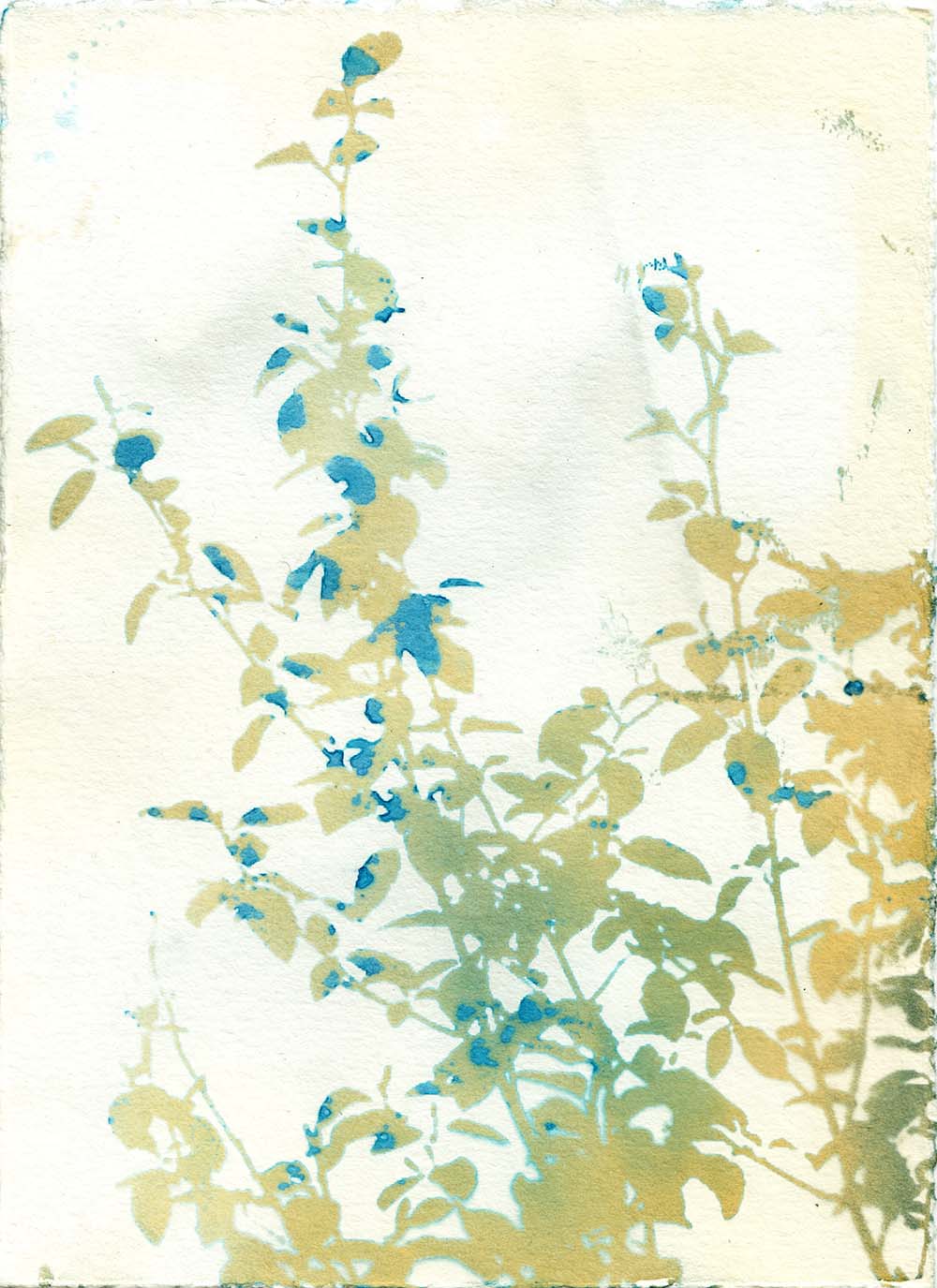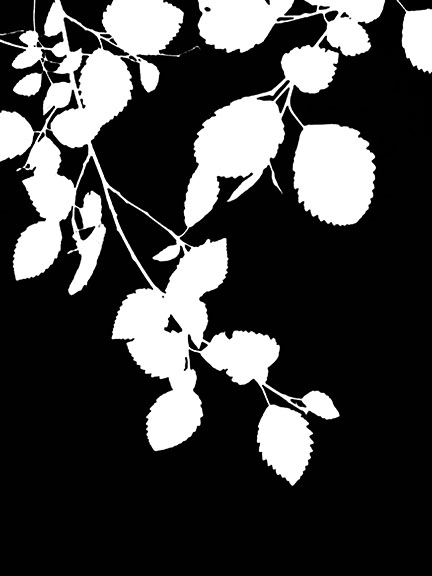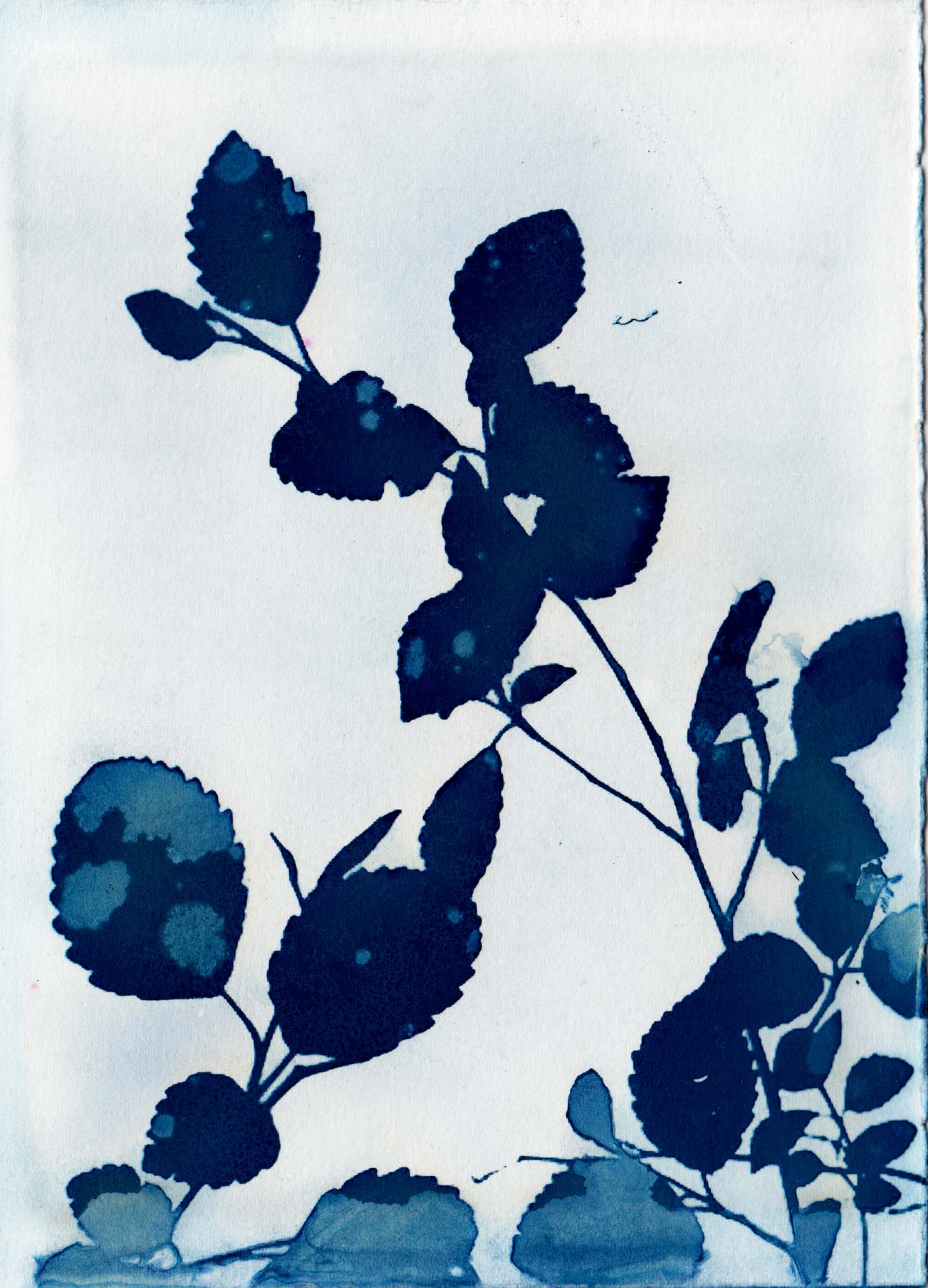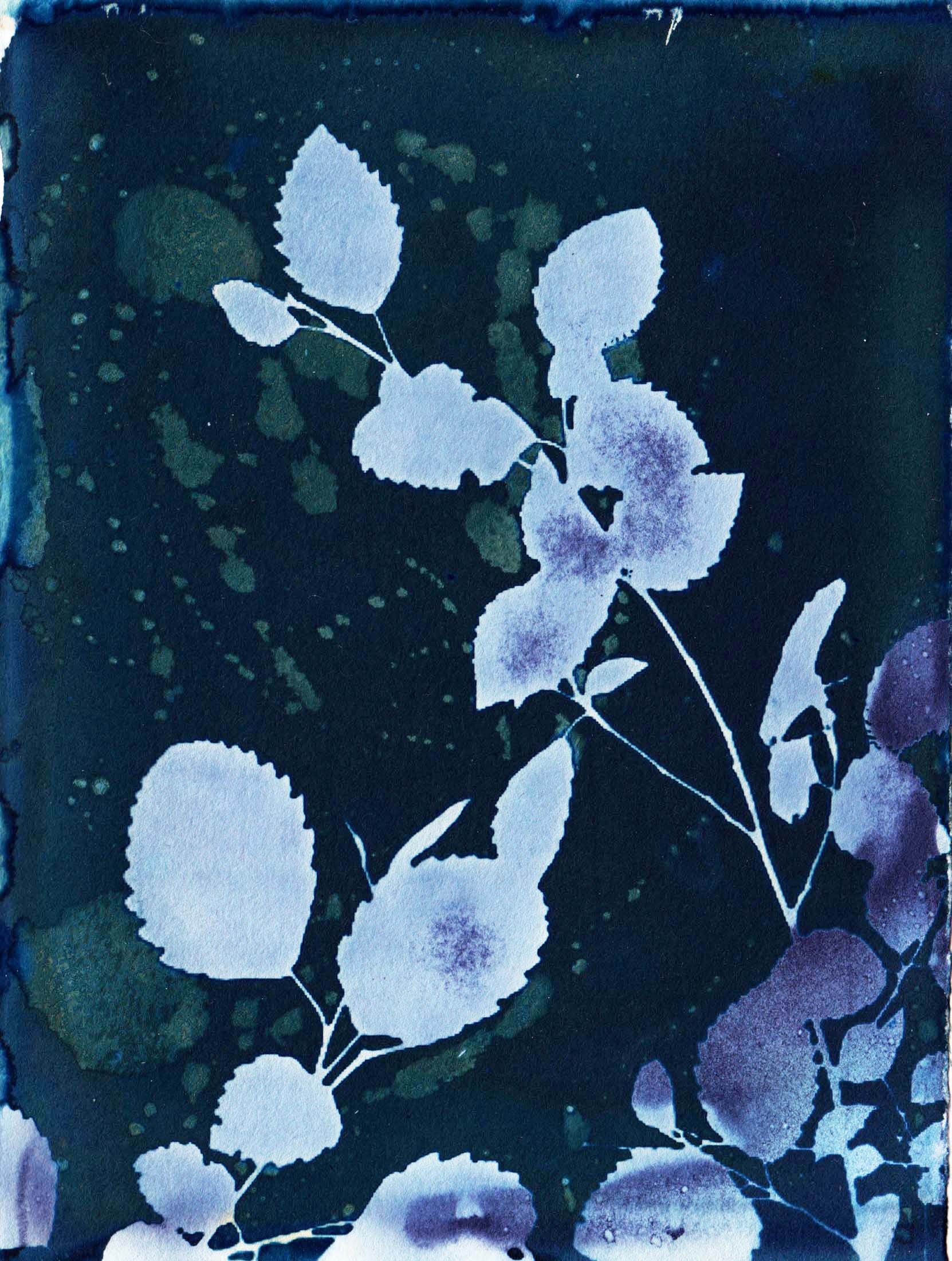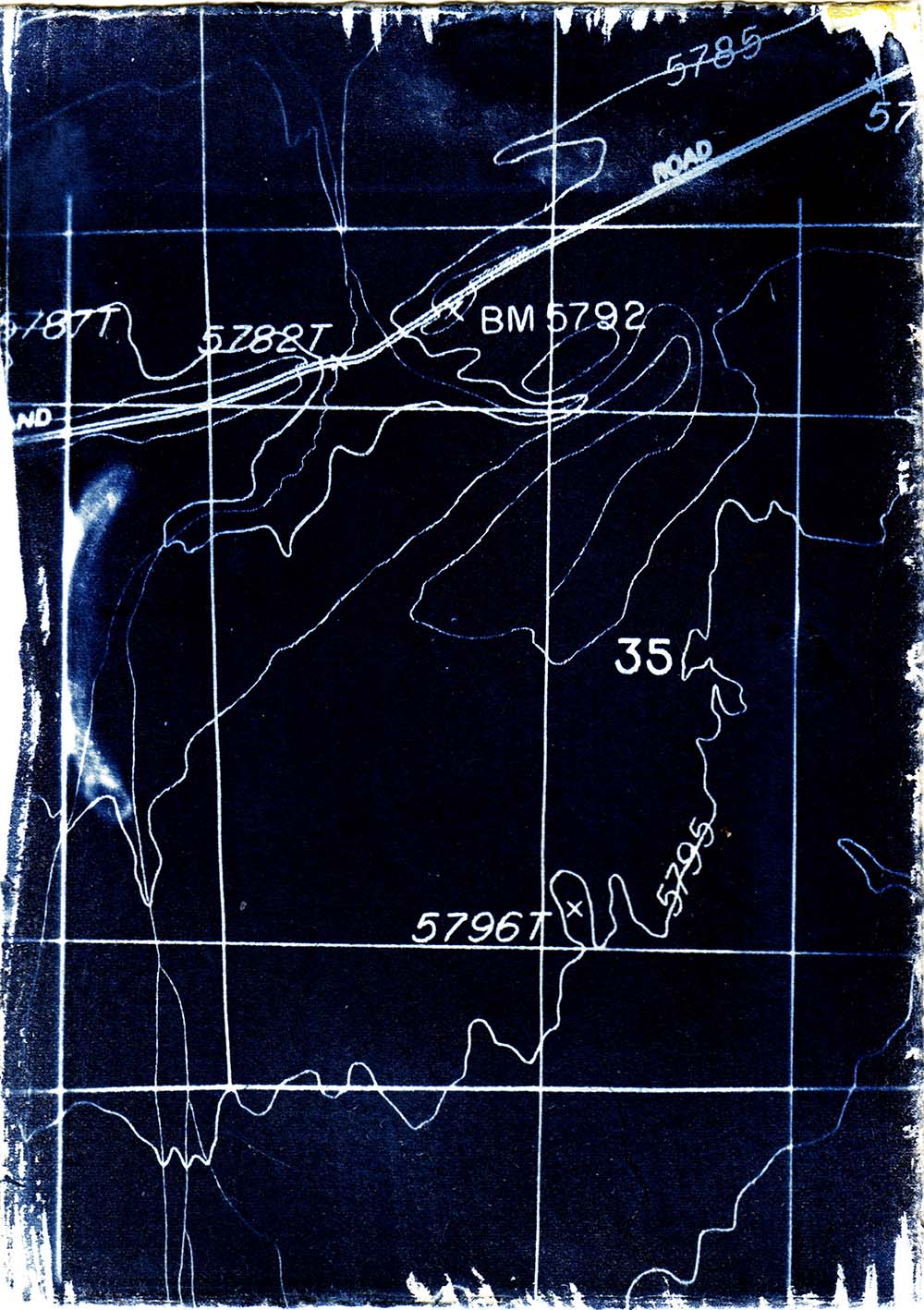The most common imagery one sees with cyanotypes is nature imagery or film negatives, the former being often with real leaves and flowers and such. If you ever made sun prints in school, you probably used plants. Although that's fun, I wanted more original and unusual images.
I got heavily into cyanotypes last summer, when I was working on an artist book documenting some of my new surroundings. I took photographs of power lines and trees, put them into photoshop, black and white contrasted the hell out of them, and printed them out using my laser printer on transparencies. Transparencies are a great way to get a wider variety of images than live material, and if you don't have access to a darkroom, or, rather, photo negatives, it's perfect.
The other great thing about using transparencies and manipulated photos is that you can invert your images with a simple click! Inverting an image really creates some unique results, and it's something you really can't do with direct plant matter.
As you can see above, the image on the left was the original transparency. The image on the right is the resulting cyanotype!
Above, you can see the inverted image on the left, and an un-inverted image on the right.
You're not just limited to nature images, either. The image above was taken from a topographic map I had enlarged (and enlarged, and enlarged) on a copy machine. I had originally done it to use for paper lithography, but printed on a transparency, it worked as a great image for cyanotypes.
So think outside the box! Don't get me wrong; I love the traditional botanical images, but it's incredibly fun to use other types of imagery. So experiment! I print out some on my laser printer, but I'll also take a bunch of transparencies to Kinko's and print there.
I linked to it in the last post, but you can get a packet of 50 transparencies for like $10 on Amazon here.
